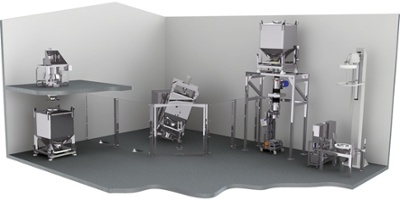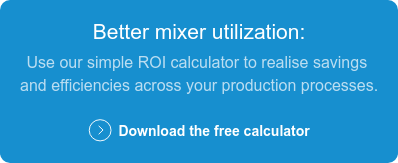Whether manual or continuous processing, the way in which you manage your bulk materials can have a huge impact on the final product. In food manufacturing there’s so much to consider from operator training, equipment maintenance, containment and safety, to manufacturing speed, accuracy and quality. With all this going on, is your powder handling under control or are there areas that could be improved?
In this article we’ll discuss some practical steps and solutions to help yield greater manufacturing efficiencies in your food processing plant.
Many food production companies grow over time, equipment is bought and added. Factory extensions to existing facilities are often in response to changing market demands and new product opportunities rather than pre-planning.
Whether you are starting from scratch, updating current equipment or have ambitions to grow, you can contact the Matcon team for advice, use of our testing facility or request a site visit.
How Did Your Manufacturing Process Grow?
Your production line could have begun simply with Operators manually opening bags and tipping them by hand into a Fixed Line Mixer and your packing area could have run in a similar manner. Later, you may have introduced conveyors to link the stages of production and bought larger equipment to increase throughput, before cloning and repeating this entire system to increase your production capacity.
Your legacy processing solution may work, but is it:
- safe for operators
- contained to reduce cross contamination and dust
- easy to clean to save time
- quick to perform recipe and batch size changes
- automated for greater efficiency and accuracy
- able to process a wide variety of recipes and batch sizes daily
Not all manufacturers grow in the same way and some of this may seem too rudimentary. But the key point here is not where food manufacturers start, it’s how they scale. Cloning and repeating an inefficient process to meet demand is a trap that many manufacturers can fall into.
How do you Convert a Legacy Production Line?
To develop, become more efficient and less wasteful requires you to change your manufacturing process. This may sound daunting and expensive but considered changes can be cost effective in the long term and yield huge efficiencies and savings. Here are some options:
- Consider Automation
For large scale production of food goods, a continuous, automated powder handling solution could suit your needs.
Each processing stage can be automated to reduce human error and manual handling. The formulation, blending and packing stages can all become automated with your ingredients being dosed accurately into Intermediate Bulk Containers (IBCs) and moved to the blending stage. Once mixed, the blended powder recipe can be moved to a Discharge Station. This is a good solution for high volume manufacturing.
- Decouple your Production Line
Continuous processing whether automated or not is predisposed to bottlenecks and pauses in production. This method of manufacturing is only as fast as its slowest processing stage. If you are waiting for a mixer to be filled, packing to complete or/and cleaning, then the entire assembly line has to be stopped.
For every recipe created, a dedicated production line will need to be employed. In cases of strong flavours, colours and especially when dealing with potential allergens, separate rooms may also need to be considered. The factory space that multiple production lines consume is costly and even more costly if a particular recipe is later discontinued.

Food manufacturers can become more productive by using IBCs to decouple their production processes. No manual handling of materials or production lines are necessary, reducing contamination risks and operator errors. Large and small quantities of ingredients can be moved to and from each processing stage within IBCs.
Each processing point can function independently and in parallel, saving much time, reducing waste and increasing productivity two-fold.

- Would an IBC system work for you?
The best way to answer this is to first look at the ROI you could get from an IBC based system. Access our easy to use ROI Calculator to discover how efficient your current processes and equipment are and then compare that to an IBC based system. You’ll be amazed at the results.
Posted by
Matt Baumber